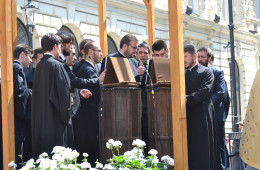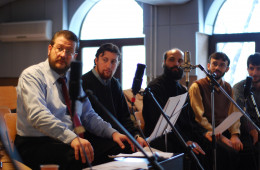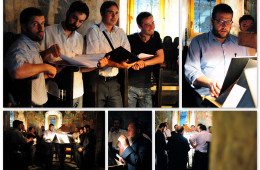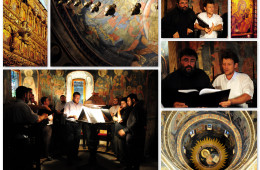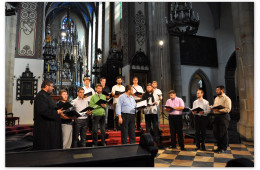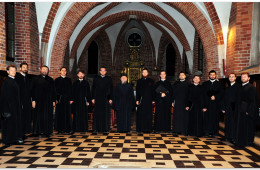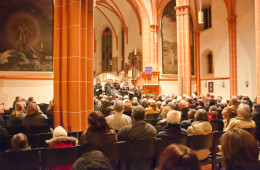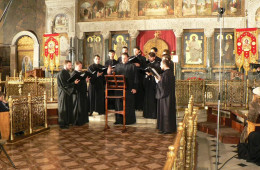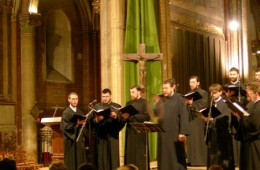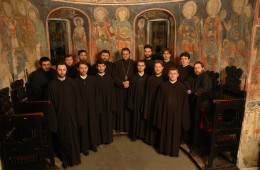Stavropoleos Psalmodic Group
In the church of Stavropoleos monastery we chant in different manner from most of the Romanian churches. We chant differently, yet nothing else but traditional church music. Chants are very much alike – sometimes, the very same – the ones included in The Yellow Book or Book of Hymns for our Lord’s Resurrection (standard version), which chanters singing on the kliros [the choir section in Orthodox Church] usually make use of. It is natural to be so, since all these are deeply rooted in the chants of Romanian psalm singers from the 19th century: Hieromonk Macarie, Anton Pann, Dimitrie Suceveanu. There are several joint aspects with compositions for several voices, written for the Liturgy.
The chant of Stavropoleos monastery is Byzantine music. Specialists usually name it neo-byzantine or traditional byzantine music in order to avoid controversy with regard to the Byzantine area or the Byzantine Empire. Chanting is monophonic, being accompanied by a drone note, a sound extended in duration, called ison. Ison is not really a second voice but a prop for the chanting, a background intended to outline its sound contour. Sometimes the ison can be “held” on the same sound all along the melody of a hymn. Most often, it changes in line with the progress of the melody.
We sing Byzantine music for it best suits community prayer. This is the liturgical music, preserved by the tradition of the Church. We preserve tradition, and we sing compositions made by Hieromonk Macarie and Schimonk Nectarie, but also Greek chants translated into Romanian or composed by contemporary singers. We chant the simple troparia together, and the choir sings the other liturgical hymns, which require advanced music knowledge. Our endeavour is to chant the music with great deliberation in order to get people closer to God and the chant thus becomes a sacrifice of praise and thanksgiving to God.
At the beginning of 1992 there were three chanters gathering on the kliros: students Gabriel Oprea and Marian Fartat (nowadays ordained), and painter Paul Gherasim. Gradually the number of chanters increased and the kliros became too small. The church became too small as well, as many of us come to Stavropoleos due to its church music. The kliros has grown not only in number but it also has enriched the beauty of singing.
In December 1992 Vespers, the Evening Service was recorded at Stavropoleos and it was edited the next year by the Romanian Peasant Museum, in Ethnophonie series. In 1994, the chanters singing on the kliros founded Stavropoleos Psalmodic Group, which promoted the Byzantine traditional music they are chanting in the church. They had concerts in the largest cities of Romania, accompanying Father Justin to conferences. They sang at the Patriarchal Palace in Bucharest, in Austria and Cyprus, at the International Congress of Musicology in Timisoara and the Festival of Sacred Music in Czestochowa (Poland), in France, Italy, Germany, at Glas Pecerska Festival (Ukraine), even in the United States and Japan, popularizing the sounds of monodic music.

